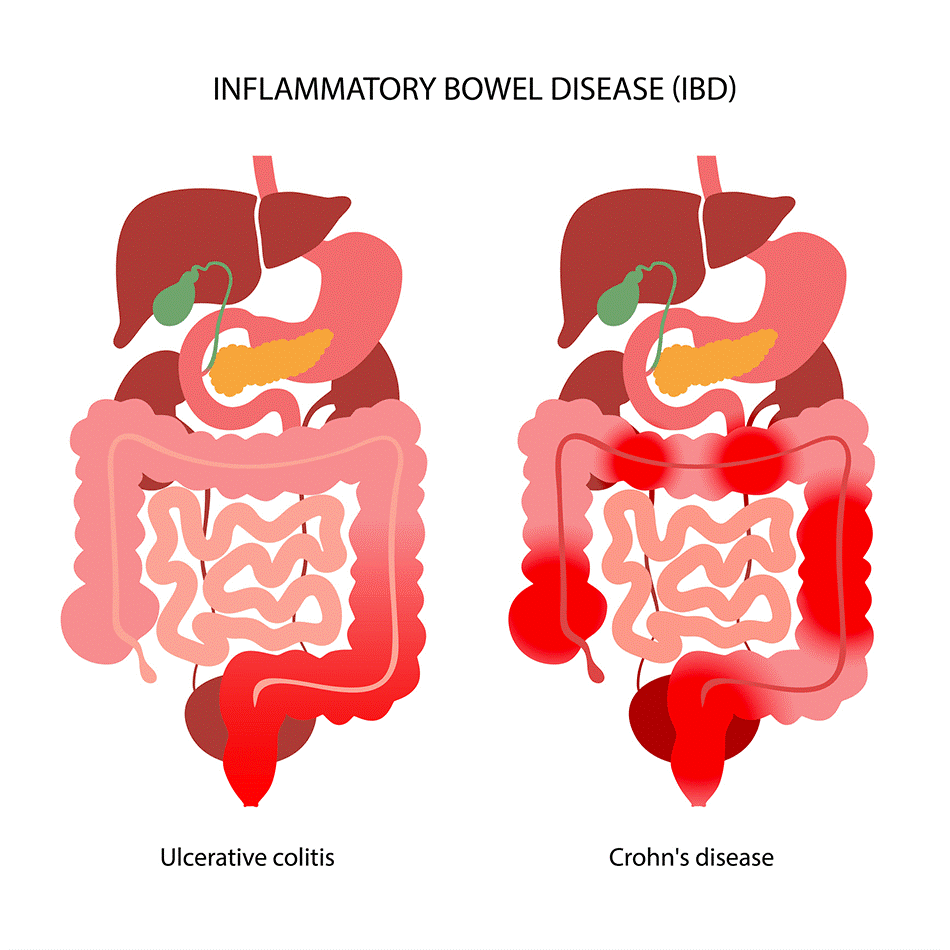Description

Source: JohnHapkinsMedicine
Disclaimer: Copyright infringement not intended.
Context
- The increasing prevalence of Inflammatory Bowel Disease (IBD) globally is raising concerns among medical experts.
Details
Global Trends
- The incidence of IBD is rising globally, including in North America and Western Europe.
- In the United States, the prevalence is expected to increase from 0.5% to 0.6%.
- There's a rise in early onset cases, particularly among those under 18.
- In India, diagnosing Crohn's disease is challenging due to the similarity with intestinal tuberculosis in clinical presentation.
Contributing Factors in India:
- Lifestyle changes, including a Westernized diet high in fat, sugar, and processed foods, contribute to the rise of IBD.
- Environmental factors and lifestyle changes have led to an almost doubling of IBD incidence in India from 1990 to 2019.
About Inflammatory Bowel Disease (IBD)
- Inflammatory Bowel Disease (IBD) refers to a group of chronic inflammatory conditions that affect the gastrointestinal (GI) tract.
- IBD differs from Irritable Bowel Syndrome, as it involves inflammation whereas IBS is predominantly non-inflammatory.
- Both Crohn's disease and ulcerative colitis are complex immune-mediated diseases, involving dysregulated immune responses.
- Genetic markers may contribute to the disease, but there's a synergy between genetic factors, external environment, and gut bacteria.
- Types: The two main types of IBD are:
- Crohn's Disease: Can affect any part of the GI tract, from the mouth to the anus, and often involves the deeper layers of the intestinal wall.
- Ulcerative Colitis: Primarily affects the colon (large intestine) and rectum, causing inflammation and ulcers on the inner lining of the colon.
Symptoms of Inflammatory Bowel Disease:
- Symptoms of IBD can vary depending on the type of IBD and the severity of inflammation but may include:
- Abdominal pain and cramping
- Diarrhea, sometimes bloody
- Rectal bleeding
- Weight loss
- Fatigue
- Fever
- Reduced appetite
- Urgent need to have a bowel movement

Causes and Risk Factors:
- The exact cause of IBD is unknown, but it is believed to involve a combination of genetic, environmental, and immune system factors.
- Risk factors for developing IBD include a family history of the disease, a history of smoking, certain medications, and environmental factors such as diet and stress.
Diagnosis and Delay:
- Diagnosis of IBD can be delayed, especially among the young, as symptoms may overlap with other conditions like Irritable Bowel Syndrome.
- A comprehensive evaluation including physical examination, laboratory tests, and endoscopy is necessary for diagnosis.
Treatment:
- Treatment options for IBD have evolved over the years, including biological therapies targeting inflammatory pathways and small molecules for oral administration.
- Biological therapy has reduced hospital stays and surgeries, improving disease management.
- Medications: Treatment for IBD aims to reduce inflammation, control symptoms, and achieve and maintain remission. Medications may include:
- Anti-inflammatory drugs such as aminosalicylates and corticosteroids
- Immunomodulators
- Biologic therapies, such as anti-TNF agents
- Dietary and Lifestyle Changes: Some individuals with IBD may benefit from dietary modifications, such as avoiding trigger foods, maintaining adequate hydration, and getting regular exercise.
Complications:
- Complications of IBD may include:
- Bowel obstruction
- Fistulas (abnormal connections between different parts of the intestine or between the intestine and other organs)
- Abscesses
- Malnutrition
- Colon cancer (in cases of long-standing ulcerative colitis)
Sources:
Hindu
|
PRACTICE QUESTION
Q. Discuss the epidemiology, risk factors, and impact of chronic diseases on public health. What measures can be taken to address the rising burden of chronic diseases globally? (250 words)
|











